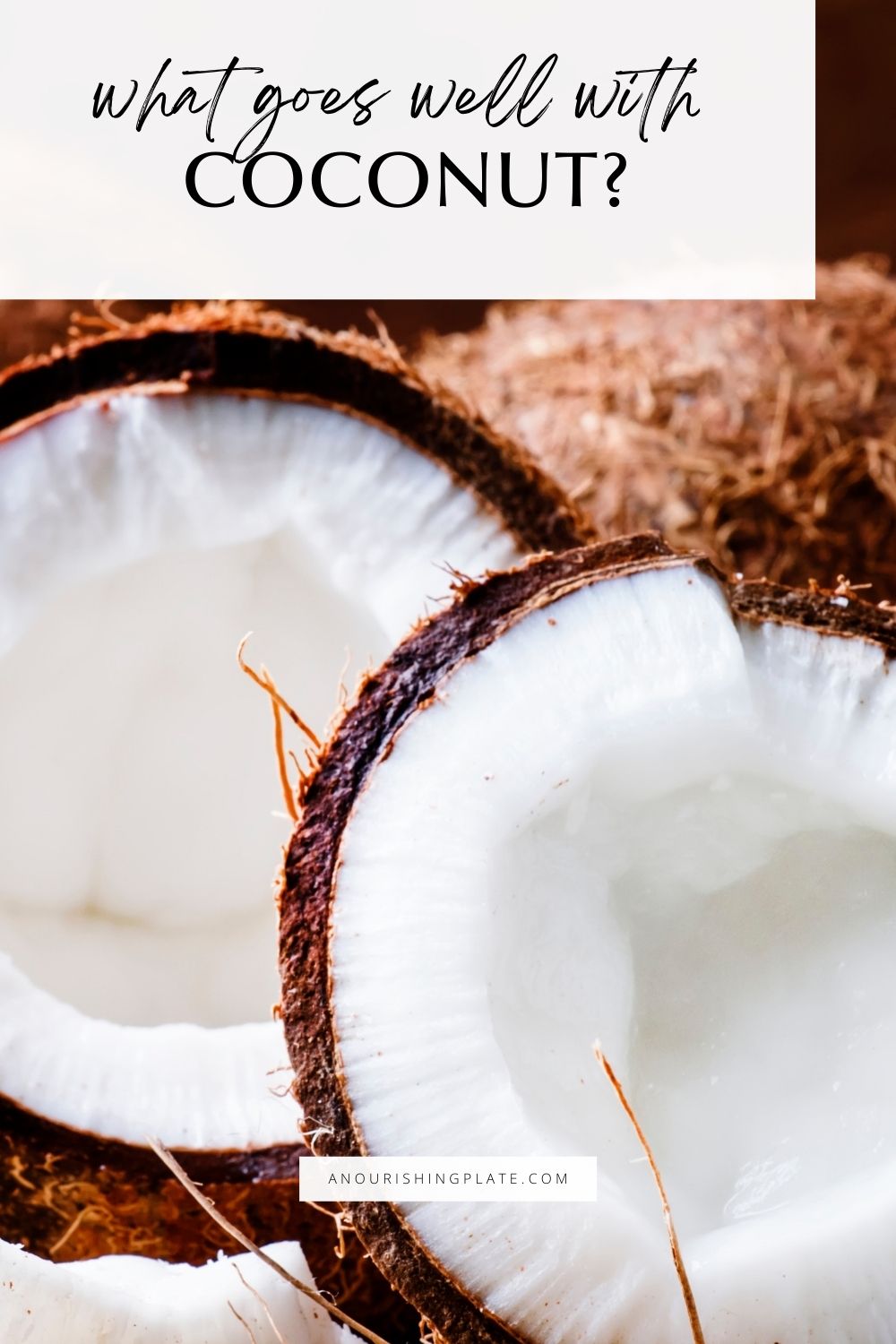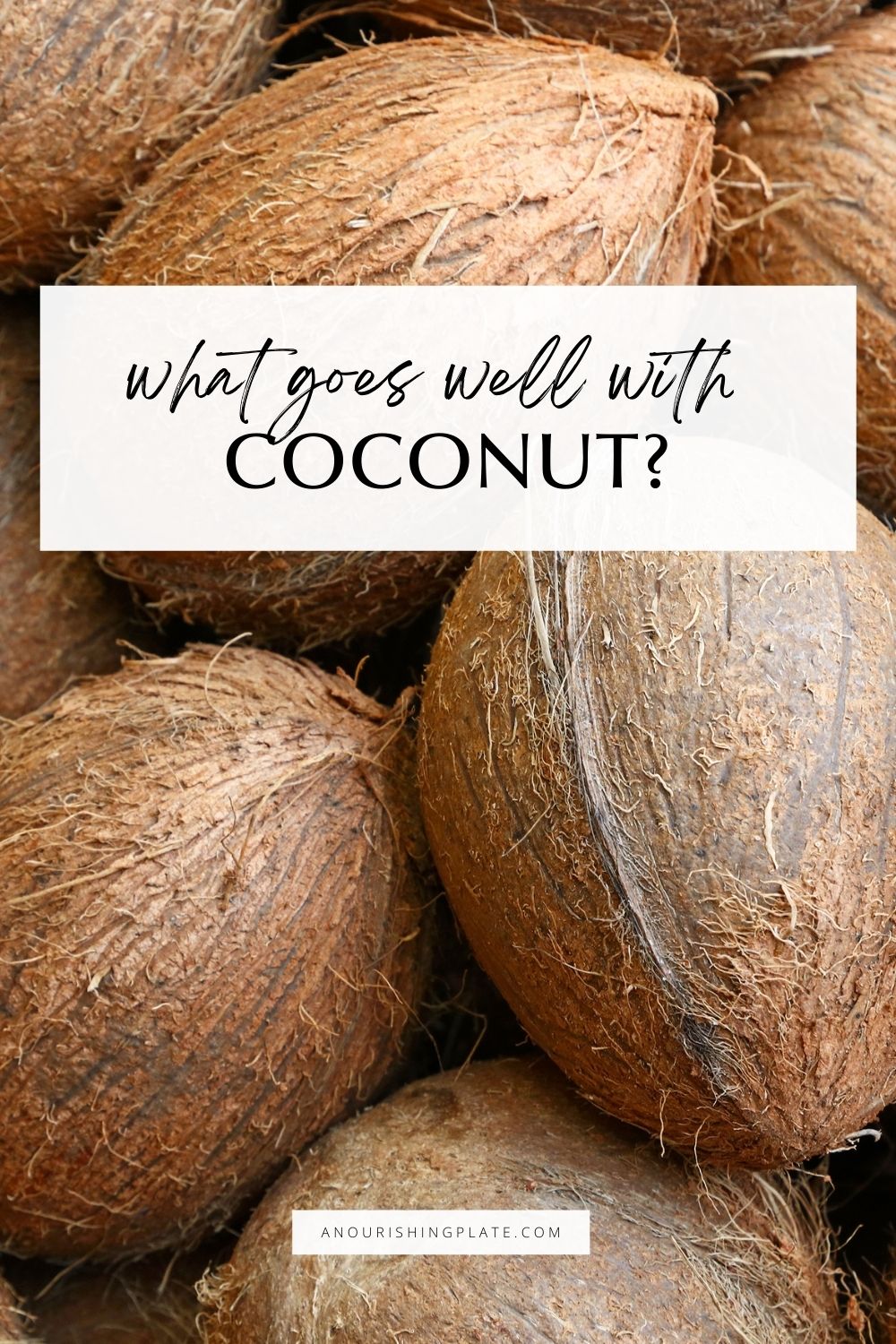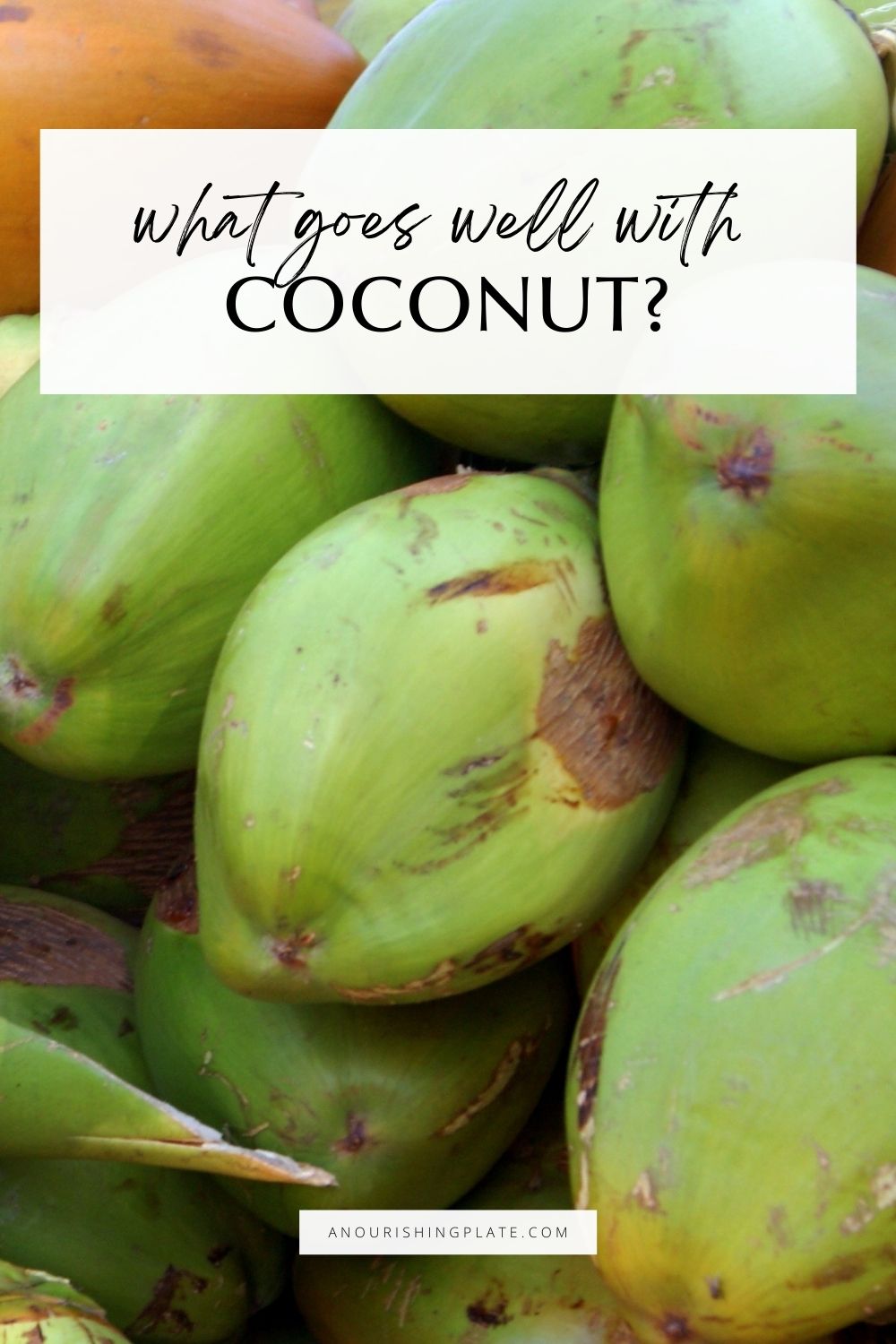What Goes Well With Coconut?
What goes well with coconut? Learn the best ingredient pairings, meal ideas, and helpful tips on buying, storing, preparing, and availability.

What’s A Coconut?
Coconuts cause a lot of confusion as to what they classify as. Their hard exterior shell has to be cracked open like a nut, but because they’re sweet, they’re eaten similarly to fruit. So is it a nut or a fruit?
Despite having the word ‘nut’ in its name, coconut is actually a fruit, not a nut.
Although coconuts are technically tree nuts, they’re classified as fruit because they lack many of the proteins that people with tree nut allergies are sensitive to. It didn’t help the confusion when the FDA added coconut to the list of tree nuts in 2006.
When To Buy
Coconut is in season year-round with a peak supply from October through December. Peep the seasonal produce guide to see what else is in season right now.
What To Look For
Whole Coconuts
When buying whole coconuts, you can either buy brown coconuts (mature) or white coconuts (young/immature).
Look for coconuts that are heavy for their size, have no cracks or moldy spots, and sound full of liquid when shaken.
Coconut Products
For ease and wider availability, various coconut products are available year-round at supermarkets such as:
- Shreds and flakes: Look for organic and unsweetened. Commercial shredded coconut contains sugar and preservatives to make it last longer than it should.
- Smiles: dried coconut slices
- Milk and cream: Widely available canned. The cream separates from the milk and rises to the top. To blend them back together, shake the can before you open it or leave them separated and scoop the cream off the top.
- Water: Drained from the center cavity of the fruit and sold fresh from vendors at the beach or in cans and cartons at the supermarket. When buying store-bought, look for products whose only ingredient is coconut water. Many contain added sugar and preservatives.
- Oil: A great source of healthy fat and comes in extra virgin, virgin, and refined. Virgin has a light coconutty taste while refined has no taste at all. Look for organic sources.
- Flour: An absorbent flour used in gluten-free baked goods like in these homemade peanut butter m&ms.

What Ingredients Go Well With Coconut?
Vegetables
Cauliflower, chile peppers (red or green), cucumber, ginger, green beans, and sweet potatoes.
Fruit
Apricots, bananas, blackberries, cherries, dates, figs, grapefruit, guava, kiwi, kumquats, lemon, lime, lychee, mangoes, orange (esp juice), papaya, passion fruit, and pineapple.
Herbs
Basil, cilantro, lemongrass, and mint.
Spices
Allspice, black pepper, cardamom, chili powder, cinnamon, cloves, coriander, cumin, nutmeg, and salt (kosher).
Nuts & Seeds
Almonds, cashews, macadamia nuts, peanuts, pistachios, and sesame seeds.
Non-dairy/dairy
Caramel, cashew cream, and sour cream.
Proteins
Beef, chicken, eggs, fish, lamb, salmon, and shellfish.
Pantry Items
Chocolate (dark or white), green tea, honey, lentils, maple syrup, oats, rose water, rum (esp dark), sugar: brown and white, vanilla, and white wine vinegar.
Popular Coconut Pairings
- apricot + ginger + green tea + lemongrass + rice + vanilla
- honey + lime
- lemongrass + vanilla
- orange + vanilla
- beef + ginger
What to Make With Coconut
Coconut is a common ingredient in Asian, Brazilian, Caribbean, Indian, Indonesian, Malaysian, Thai, and Vietnamese cuisines.
You’ll find coconut in many desserts such as candy, dairy-free ice cream, and custard as well as in curry, fruit salads, soups, and stews, and more.
Recipes on our site that use coconut are coconut shrimp, Thai red curry soup, coconut rice pudding, tropical trail mix, and dairy-free caramel sauce.
More Ingredient Pairings


